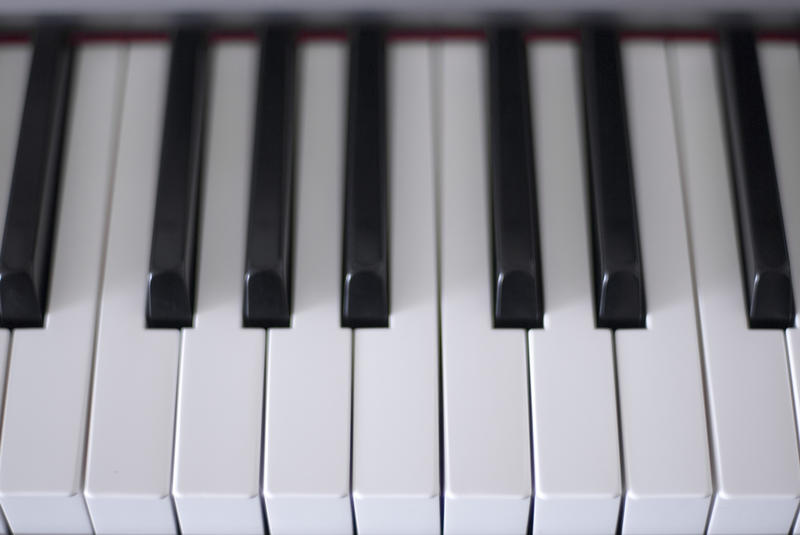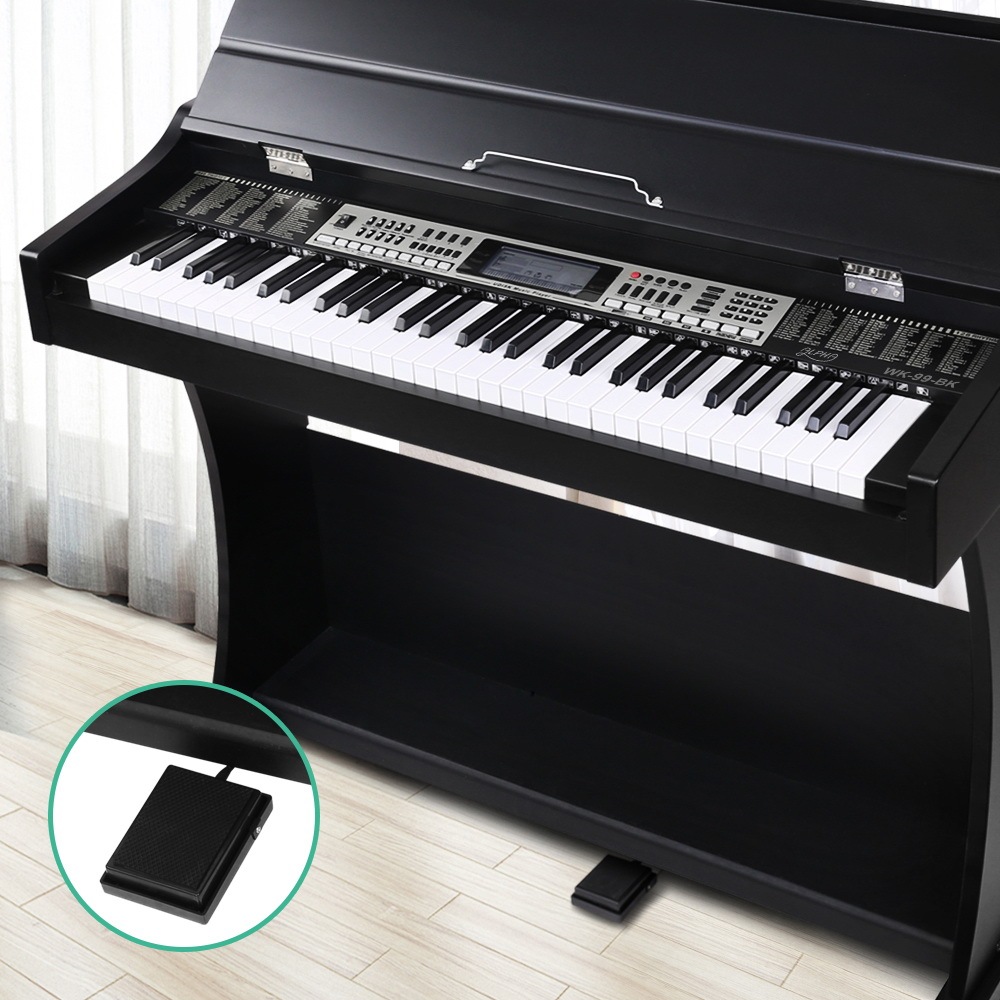

Please scroll down the page for the download links. Here is a student who has placed a little animal on each G# key. It's a BIG DEAL when we've gotten through all the white keys, and turn our attention to those mysterious black keys, with the double names. "This week, I want you to write in all the D's, in pencil, and play every D, etc.", so that we keep returning to the paper piano keyboard layout week after week. I used to assign kids the entire paper to fill in the first week, but gradually I've come to assign just one note name per week, and stipulate that at home, they are to strike every one of THOSE keys up and down the keyboard every day. (As long as "ghost images" don't remain behind!) One new key at a time You might also find it useful to laminate one of the online piano keyboards below, and allow your students to write on the keyboard with an erasable felt pen, to use the keyboard over and over.

Return from Free Piano Key Chart (Full Piano Keyboard Chart) to home page.If you choose to print out this particular piano learning guide for your students (or yourself), I suggest laminating it, or using wide tape to cover the important parts of the page! INK IS SO EXPENSIVE, and we music teachers seem to need a lot of it. Click here for the best online course I’ve seen on learning how to play piano. If you want to learn to play piano the easy way go here. This is a much faster way to learn piano. Personally, I’m not a fan of the traditional way in which piano has been taught.

Here’s some more information on the layout of piano keys as well as a printable piano keyboard template for beginners. Using the information presented here you should be able to find any key easily. Spend time going through the piano key chart on this page. Also, the letter B had to be part of the scale. We do not call B flat “A sharp” in this scale since we need that note name to represent the note A which has already been used. The notes in the key of F major are F G A B-flat C D E. This is because we have already used the letter G in the scale. Instead of calling the note G flat, we call it F sharp. In the key of G the major scale is G A B C D E F-sharp. In a diatonic scale an individual note may not occur more than once. So if necessary, a composer may very well prefer to write an E sharp or even a D triple sharp instead of an F. Enharmonic notes are usually used by composers to make the note’s place in the harmonies of a piece of music clearer to the performer. F, E sharp and D triple sharp are enharmonic equivalents. If two notes have the same pitch but are represented by different letter names and accidentals, they are enharmonic. F can be called G double flat or even D triple sharp! Using this same principle the note one semitone higher than E is F, but it can also be called E sharp. But since it is two semitones lower than D it can be called D double flat as well. For instance, (as can be seen in the piano key chart or piano keyboard chart above) C is one semitone (one half step) higher than B and can be called B sharp. Technically, a key can have a limitless number of note names. It’s all about steps or tones. In the same way the note one semitone higher than D is D sharp, but since it is one semitone lower than E it is also called E flat. For instance, the note one semitone higher than C is C sharp, but since it is one semitone lower than D it is also called D flat. In this piano keyboard chart most of the keys have two note names. Look closely at the piano key chart above. While all black keys are either sharp or flat, white keys can be sharp or flat as well. Many of them think that a black key means a sharp or flat while the white keys are neither sharp nor flat. Many piano students do not know or are confused by this point. This is because white keys can also be sharp and flat. They are usually the names given to the white keys on a piano. When learning the keys on a piano the first notes to learn are A B C D E F G. We’ve already seen that the notes on a piano are named after the first seven letters of the alphabet. With this free chart we explain sharps and flats in more detail.įor more on this topic and to learn how to play the piano, check out my course, Piano Lessons For Beginners: Learn Piano Quickly And Easily. We’ve already looked at a simple piano keyboard diagram (free piano keyboard chart) here but this time we take things a little further. Are you in search of a full piano key chart? You will find one below.


 0 kommentar(er)
0 kommentar(er)
